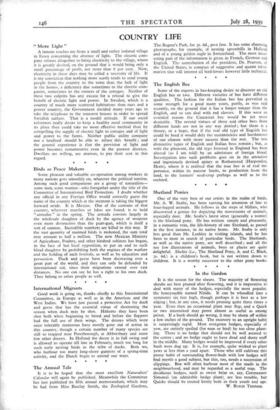The English Bee Some of the experts in bee-keeping desire
to discover an old English bee or two. Different varieties of bee have different qualities. The fashion for the Italian bee has prevailed in some strength for a good many years, partly, as was said recently, on the ground that it has a longer tongue than the English, and so can deal with red clovers. If this were an essential reason the Caucasian bee would be yet more desirable. The several virtues of these and other bees from different lands are not in any way denied ; but there is a theory, or a hope, that if the real old type of English bee could be bred it would defy the eccentricities and harshnesses of our climate with more success than the rest. The two distinctive types of English and Italian bees remain ; but, as with the pheasant, the old type fostered in England has been altered (so I am told) by an admixture of foreign blood. Investigation into such problems goes on in the attractive and ingeniously devised apiary at Rothamsted (Harpenden, Herts), where it is realised that the true bee is of real im- portance, within its narrow limits, to production from the land, to the farmers' seed-crop perhaps as well as to the orchard.








































 Previous page
Previous page